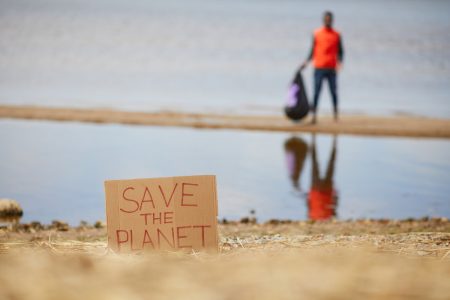
News
SUSTAINABILITY
Brussels accelerates the use of funds to finance ‘green innovation’
European Commission launches industrial plan to boost EU competitiveness in the sustainable transition
CLIMATE CHANGE
With more than 15 years of involvement in climate change adaptation and mitigation projects, we have found that these projects face more barriers than any other Project

Igor Idareta, EU Projects Team Leader at Zabala Innovation, has participated in Nadapta-CC, Urban Klima 2050, and Regions4Climate, pioneering projects on climate change adaptation. With him, we review Zabala Innovation’s trajectory and experience on the road to climate resilience.
The first practical action we took on climate change adaptation was in 2016, with Nadapta-CC, an integrated LIFE project of the Government of Navarra, which aims to help implement the regional climate change strategy. We have been developing climate change adaptation and mitigation strategies for more than 15 years, but it is a reality that this type of projects experience more difficulties to be implemented in reality.
One of the reasons why the European Commission launched the call for LIFE integrated projects was to overcome this barrier, to try to support the effective implementation of these plans. Nadapta was the first project to implement an adaptation strategy at regional level in Navarra, with local partners and a cross-sectoral approach, involving different sectors. The project was the first to be implemented in Spain and the second in Europe, so it was a milestone, because it was a pioneer in the call for proposals.
In 2018, we helped the Basque Country in the Urban Klima 2050 project in the same call, in which the Basque Government faced the same challenge: to manage to dynamise and implement its climate change adaptation strategy in practice. The Basque Country’s project represented a qualitative leap in the complexity of its implementation, because in addition to covering technical or sectoral issues, it also had to work on governance models at different levels. In the Basque Country, we have three provincial councils and, as a novelty, local entities were also involved, both the three large capitals and three municipalities in each of the provinces. The leap that represented a milestone was the incorporation of more agents than in the previous project in Navarre, in addition to the challenge of the governance of this strategy.
More recently, in 2022, we have supported the approval of another integrated project ECOADAPT 50, in Catalonia, the main novelty of which is the involvement of financial institutions and insurance companies in climate change adaptation.
The first two projects, Nadapta and Urban Klima 2050, are in their second half, ending in 2025, so they have already implemented most of the activities. In addition to being able to demonstrate some activities in practice, and improve resilience in the territories, the main impact is the development of these governance models and the vocation to incorporate climate change concerns and priorities into traditional policies on employment, industry, tourism, primary sector management, etc.
The first projects have been more technical, but in the practical implementation, the involvement of society’s actors is the next challenge, so it is not simply a government and administration project but ends up involving and activating the entire ecosystem of actors in a territory. This is the leap we are making in Regions4Climate, where the focus extends more toward citizens.
The S4 Smart Specialisation Strategy is the evolution of the RIS3 strategies, smart specialisation strategies in innovation. These strategies were born with the vocation that each region of Europe should focus its efforts on the areas in which they have the greatest potential, specialising in the areas in which they can be the strongest.
This is updated with the 4S because of the sustainability aspect; these are strategies that also have to be sustainable, both environmentally and socially.
The S4 leaps and brings innovation to the social and environmental areas. Sustainability has to be economic, social, and environmental.
Regions4Climate is a project that will allow us to be able to assess the degree of climate resilience of a region. This is an important step because it allows us to be aware of where we are, and to identify ways to improve climate resilience, which are particular to each region.
The other major achievement would be to further deepen the governance models, which have to pivot at the level of the regions, and which are the ones that can implement these actions. At the national level, they remain diffuse, and at the local level, they lack traction. The regional level is the optimal environment for action.
Laura Wendling, the coordinator of the Regions4Climate project, gives us some broad examples of the types of resilience actions that will take place in the regions.
“We have organised twelve large-scale, regional-scale demonstrations within this idea of faster, smarter, and more systemic adaptation to climate change. So it is very much aligned with the European climate change adaptation strategy”.
What we are trying to do is to demonstrate, validate and showcase innovative ways of bringing together different types of innovations in different sectors to achieve societal resilience”.
The Basque piloting is identified in the project as a “front runner” region, not to say that it is better than other regions, but that it has proven experience and a more advanced starting point.

News
SUSTAINABILITY
European Commission launches industrial plan to boost EU competitiveness in the sustainable transition

Opinion
LIFE PROGRAMME

Adrián Rivas
Consultant

Publication
CITIES
Check out our downloadable document that summarises EU funding opportunities for urbans projects
Europe offers many opportunities to support and foster Research, Development and Innovation actions. Competition is high and being well positioned among stakeholders active in each sector requires a well thought-out plan of action and an active way of promoting visibility in Brussels.
We are experts in European funding programmes, which provide the opportunity to finance the development and market access of your company's innovative projects.
We guide companies through the implementation of adequate innovation strategies, which allows them to tackle any transformation challenge in a coordinated and effective manner, from an integrated perspective.
This website uses cookies so that we can provide you with the best user experience possible. Cookie information is stored in your browser and performs functions such as recognising you when you return to our website and helping our team to understand which sections of the website you find most interesting and useful.
Strictly Necessary Cookie should be enabled at all times so that we can save your preferences for cookie settings.
This website uses Google Analytics to collect anonymous information such as the number of visitors to the site, and the most popular pages.
Keeping this cookie enabled helps us to improve our website.
Please enable Strictly Necessary Cookies first so that we can save your preferences!
This website uses the following additional cookies:
(List the cookies that you are using on the website here.)
Please enable Strictly Necessary Cookies first so that we can save your preferences!